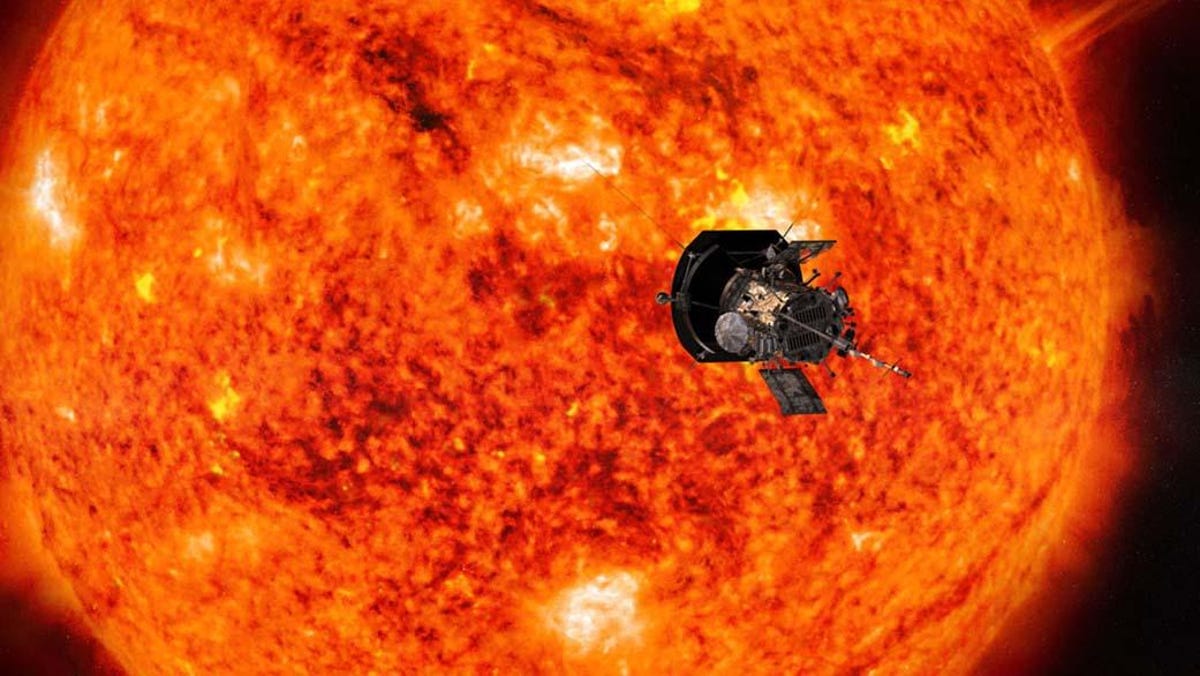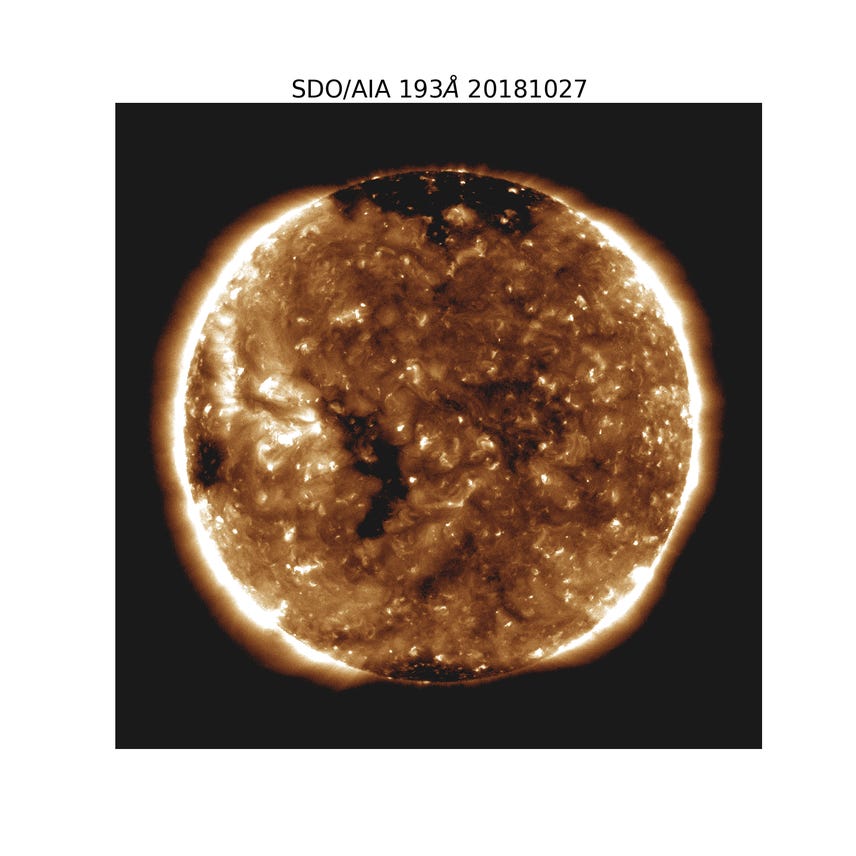Inside NASA's daring mission to touch the sun
The Parker Solar Probe is one of the most extreme spacecraft ever built -- it practically lives inside the sun's ultra-hot atmosphere.

NASA's insane mission to 'touch the sun'
The Parker Solar Probe mission was first announced in 2009, and the exceptional, extreme spacecraft was built by Johns Hopkins University. It contains an impressive "cutting-edge" heat shield, which allows it to get closer to the sun than any other object before it.
Come with us on a journey to high-five the sun!*
*Don't actually try to high-five the sun -- just enjoy these wonderful images of NASA's most extreme spacecraft.
How to orbit a star
The Parker mission design shows how the spacecraft will get closer to the sun over its lifetime.
Over the course of seven years, the probe will use Venus seven times to pick up speed and slingshot ever closer to the sun.
The journey to the sun
A triple trail of flames, from a Delta IV Heavy rocket, cuts through the early morning dark on August 12, 2018, carrying the Parker Solar Probe to space. The mission plans to "touch the sun," orbiting well within the sun's "corona," a hot and mysterious region of space.
The probe is named after Eugene Parker, a pioneering physicist who studied the sun and its solar wind, proposing revolutionary ideas about how stars work. It's the first NASA craft named after a human being.
The first (of many)
This image was taken by Parker's WISPR imaging suiteThis image was taken by Parker's Wide-field Imager for Solar Probe (WISPR) imaging suite, which contains three cameras that can snap a view of the cosmos. The images are specially filtered so that the sun's bright light does not obscure the view.
Gas giant Jupiter is visible. It's the bright spot on the right-hand image, just right of centre.
Inside the sun
When Parker zoomed through the sun's corona in October and November 2018, it snapped this image -- practically the first from inside the sun's atmosphere, the ultra-hot "corona."
The bright dot is Jupiter, which just loves to photobomb Parker's sun-shots.
Premium solar science from PSP
The probe's chief mission is to study the solar wind in the corona, the outflow of charged particles and magnetic fields generated by our star. This artist's impression shows Parker zipping against the charged particles, which ram into detectors with the spacecraft and can be analyzed.
Records fall
This unusual looking device is Helios 2, a previous NASA spacecraft which also studied the sun.
It was, for many years, the fastest human-made object ever. But Parker stole that title in 2018 when it edged close to the sun, spinning around our massive star at 153,454 mph (247,000 km/h).
But the heartache for Helios 2 didn't end there: Parker also broke Helios 2's record for proximity to the sun -- and it's only going to get closer of the next seven years.
WISPR nabs epic photo of an elusive dust trail
Parker Solar Probe's WISPR camera suite captured the elusive dust trail of 3200 Phaethon, pictured here (dotted line). The trail had largely avoided detection because of its proximity to the sun, but WISPR can see through the bright light emanating from the star and pick out the fine trail.
Magnetic field 180
The sun's magnetic field undergoes weird "switchbacks," which produce S-like bends in the field and change the way charged particles move out into space. This weird feature of the solar wind is still being studied and Parker will contribute to our ever-growing knowledge of the sun's unusual behaviors.
Whispers of Jupiter
Another WISPR image shows the outflow from the sun, with Jupiter (in red) moving across the cameras field of view. Understanding the solar wind is important for Earth because it can affect the magnetic fields which surround the planet.
"When structures in the solar wind reach Earth, they can drive dynamics in Earth's magnetosphere, including particle precipitation from Earth's radiation belts," explains Nicholeen Viall, a NASA solar scientist.

Holy Corona!
This picture, taken by the Solar Dynamics Observatory, shows a long thing coronal hole across the sun (central black line). Parker observed the hole in Oct. 2018 and science results, released in Dec. 2019, demonstrated some unusual phenomena.
No dust allowed
Preliminary data shows Parker found a region close to the sun which seems to contain less cosmic dust than further out. Follow up studies will be required to determine if this long-hypothesized "dust free zone" does exist -- or not.
"This dust-free zone was predicted decades ago, but has never been seen before," said Russ Howard, lead investigator on the WISPR instrument.
Onward and inward
Parker's journey will continue until 2025. It will continue to get closer and closer to the sun, speeding up as it goes and eventually reaching a maximum speed of 192 kilometers per second. At that point, it will be spinning around the star every 88 days, just like Mercury does -- but at a much faster clip.

